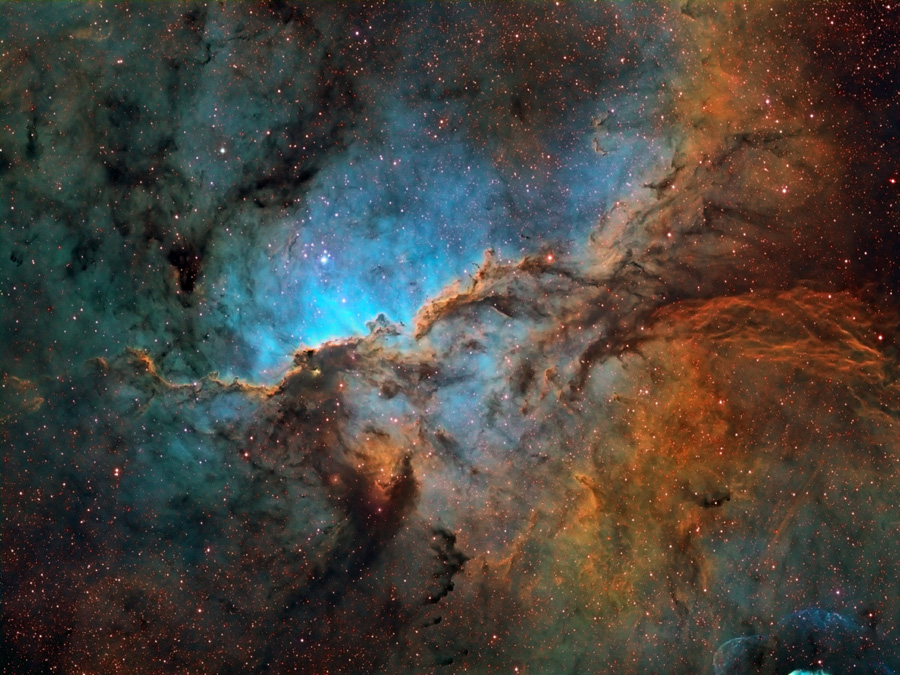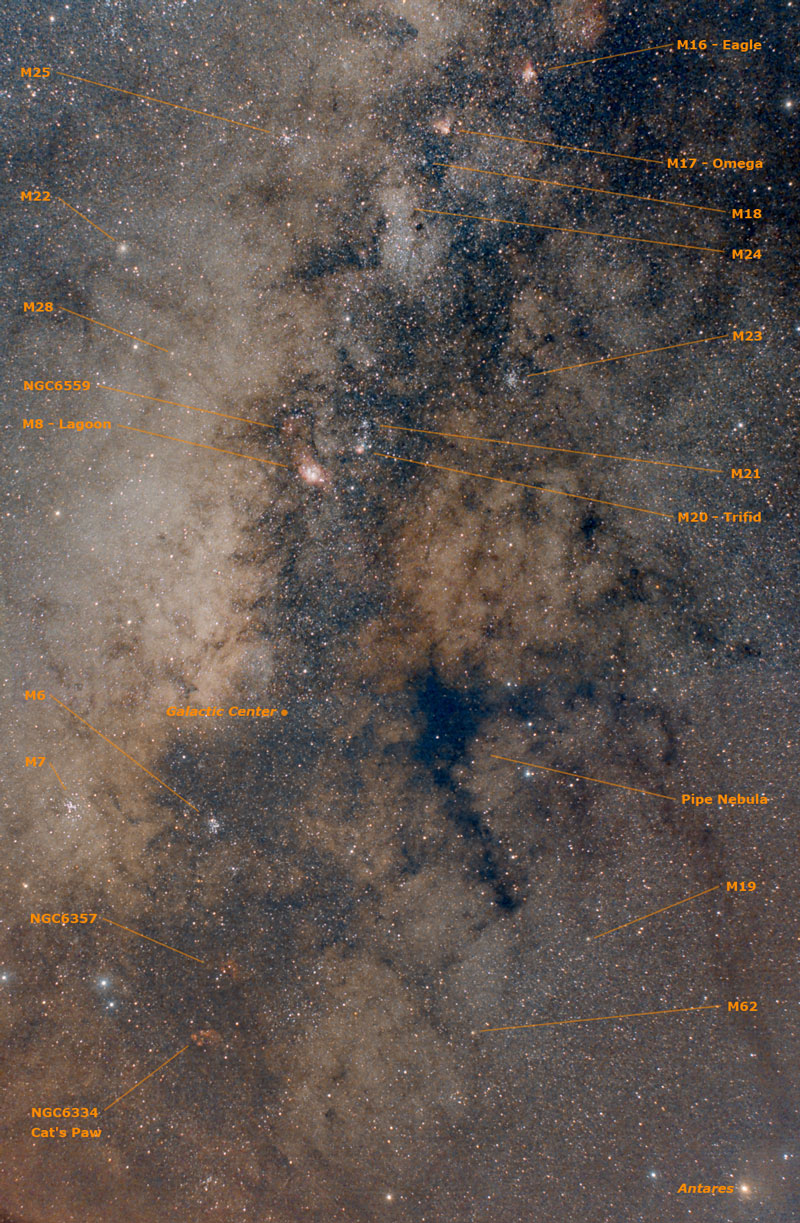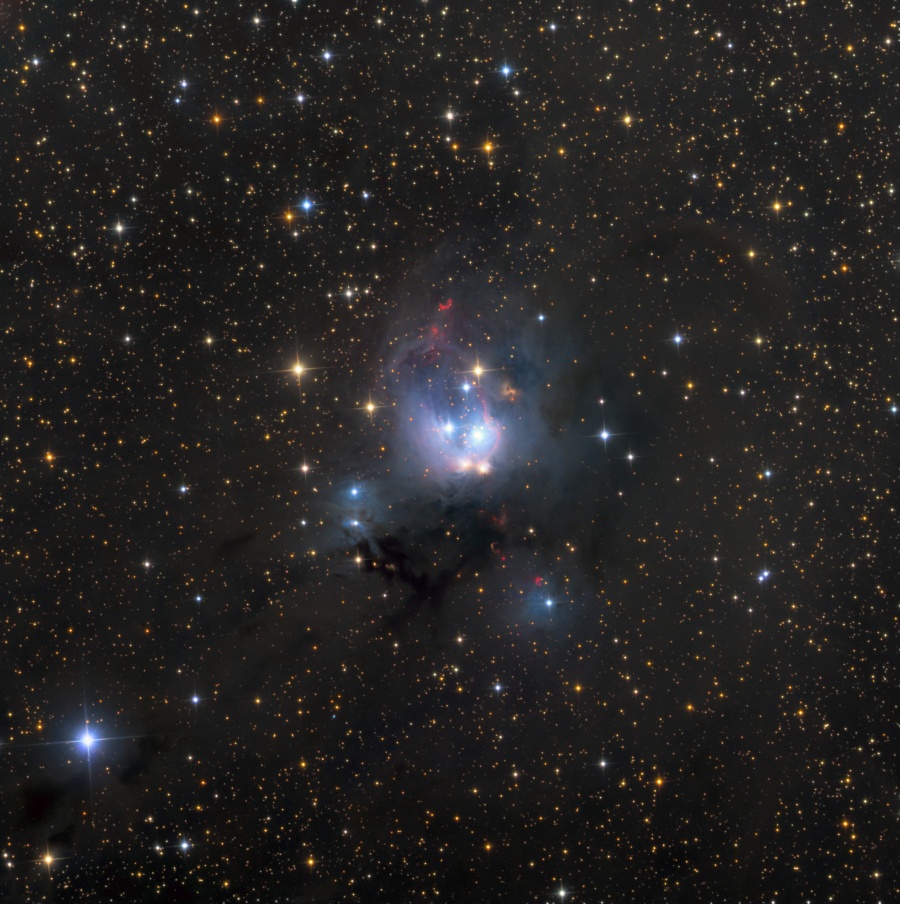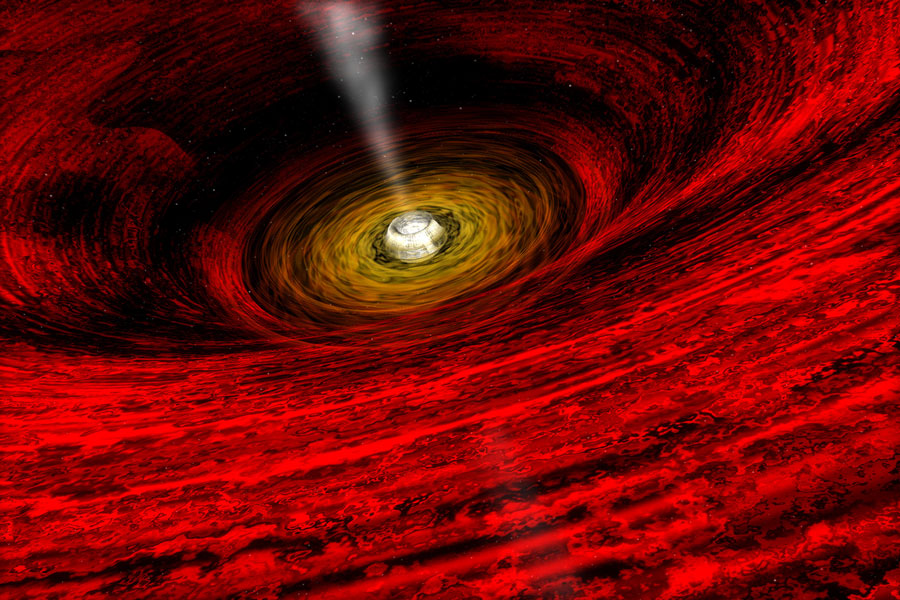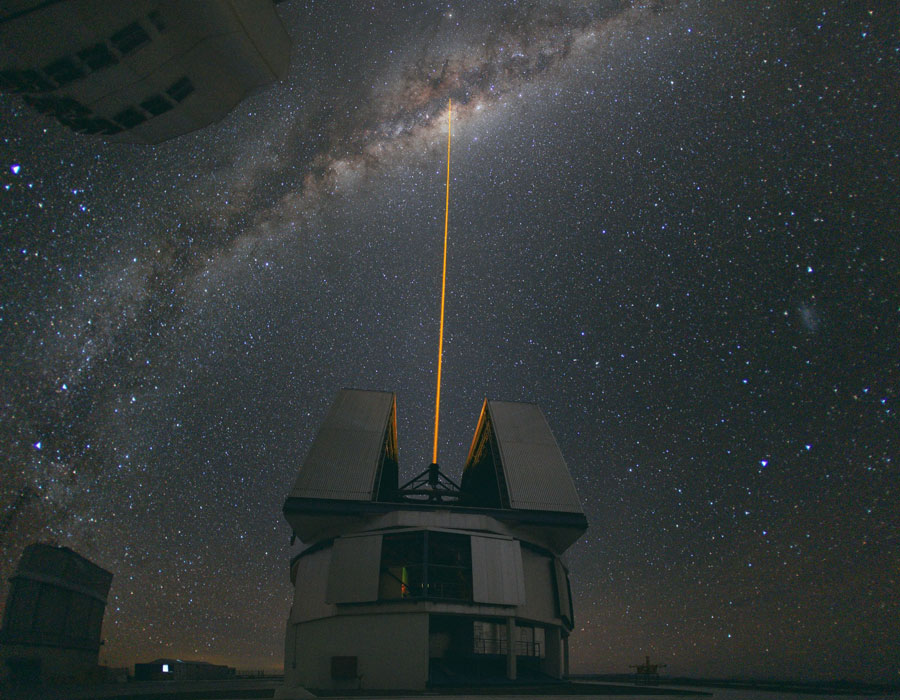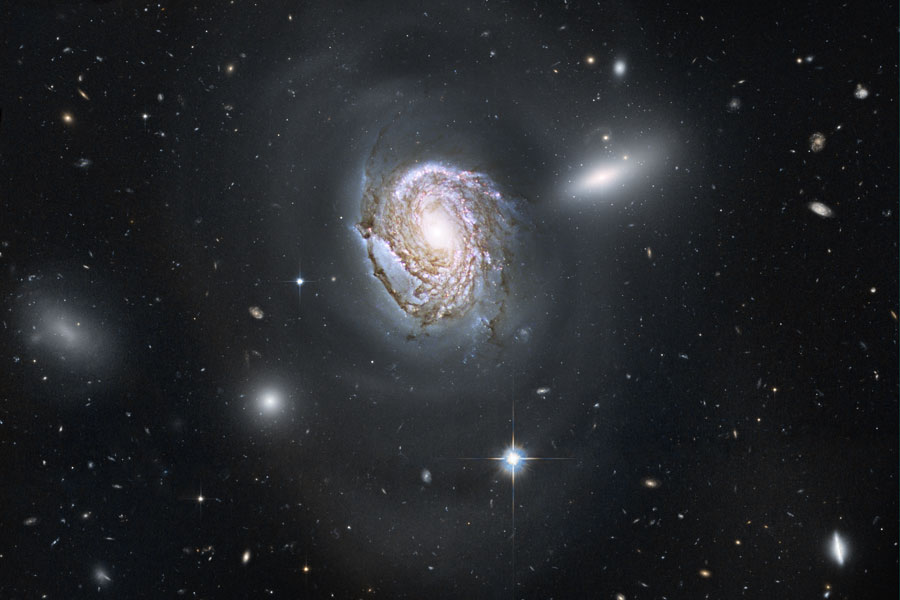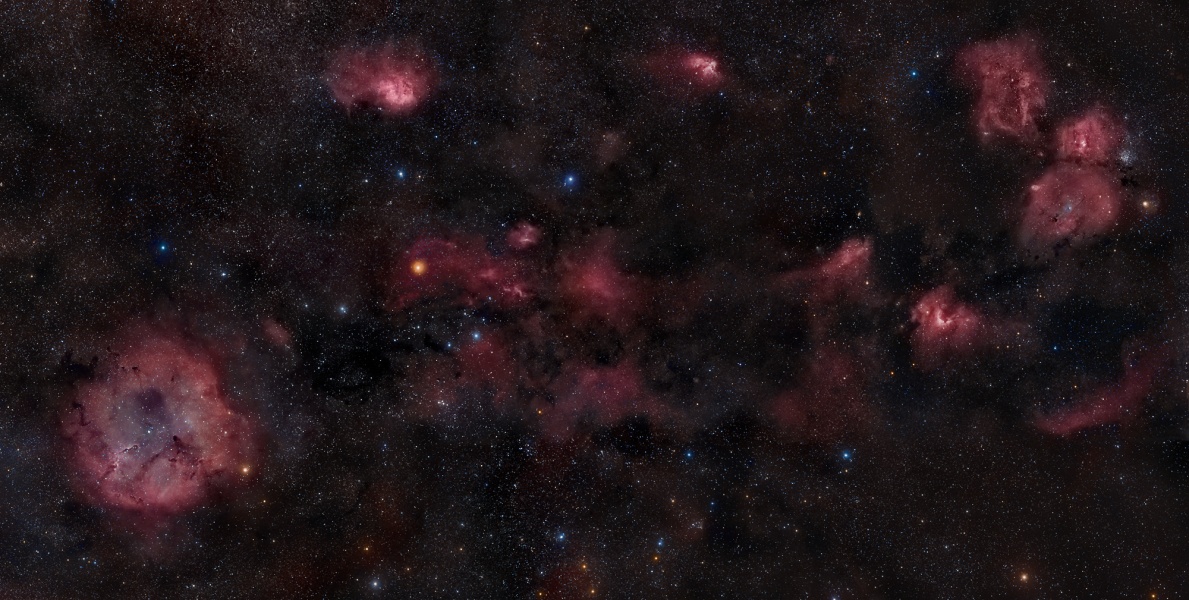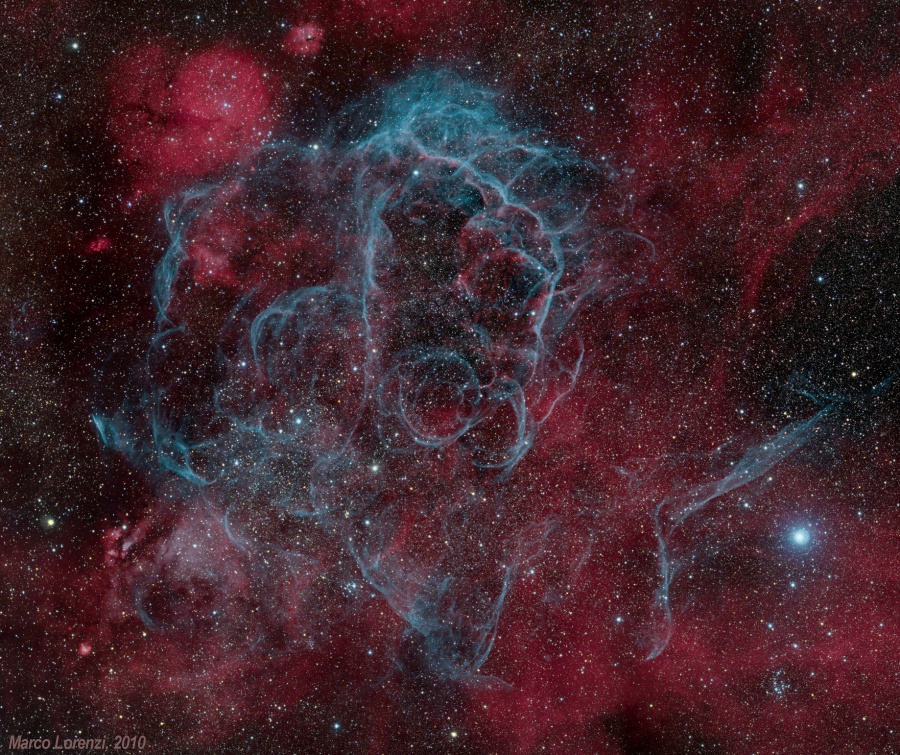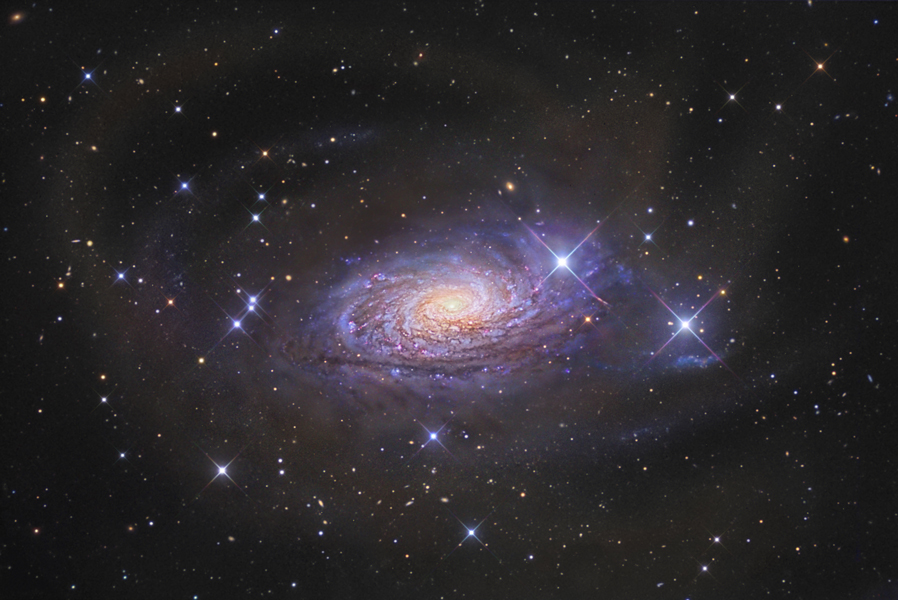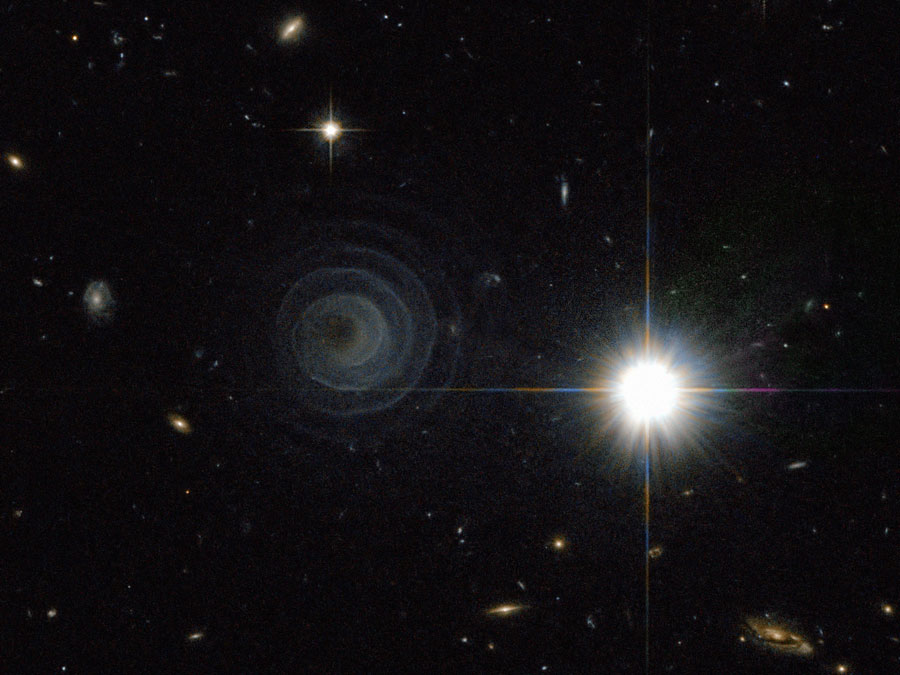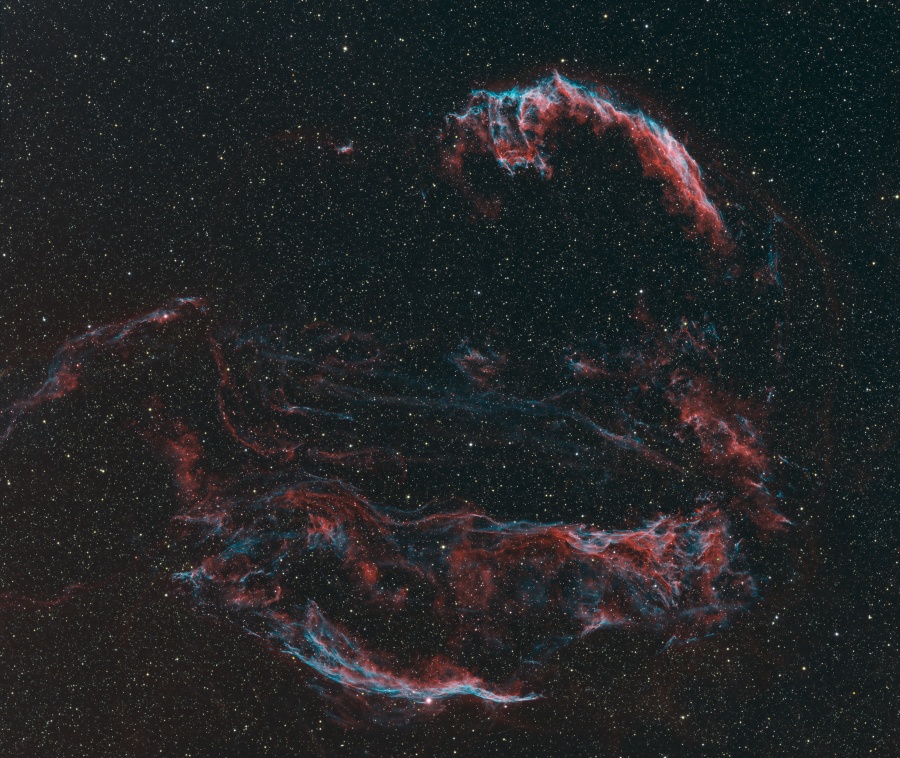Discover the cosmos! Each day a different image or photograph of our fascinating universe is featured, along with a brief explanation written by a professional astronomer.
2010 July 15

Andes Sunset Eclipse
Credit & Copyright: Janne Pyykkö Explanation: On July 11, after a long trek eastward across the southern Pacific Ocean, the Moon's shadow reached landfall in South America. In a total solar eclipse close to sunset, silhouetted Moon and Sun hugged the western horizon, seen here above the Andes mountains near the continent's southern tip. To enjoy a good vantage point, the photographer hiked to a windy spot about 400 meters above a lake, Lago Argentino, climbing into the picture after setting up his camera on a tripod. At left, the sky outside the shadow cone is still bright. Below, the lights of El Calafate, Patagonia, Argentina, shine by the lake shore.
2010 July 15

Andes Sunset Eclipse
Credit & Copyright: Janne Pyykkö Explanation: On July 11, after a long trek eastward across the southern Pacific Ocean, the Moon's shadow reached landfall in South America. In a total solar eclipse close to sunset, silhouetted Moon and Sun hugged the western horizon, seen here above the Andes mountains near the continent's southern tip. To enjoy a good vantage point, the photographer hiked to a windy spot about 400 meters above a lake, Lago Argentino, climbing into the picture after setting up his camera on a tripod. At left, the sky outside the shadow cone is still bright. Below, the lights of El Calafate, Patagonia, Argentina, shine by the lake shore.

